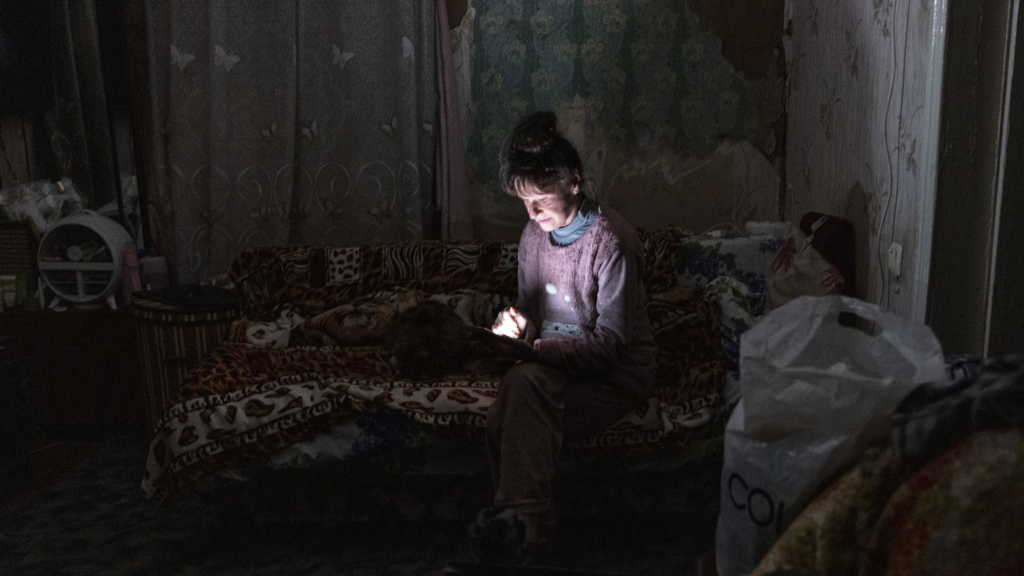Thrift stores, like this one in Charlotte, N.C., could see an uptick in sales amid economic woes. But experts say supply could also become an issue.
Lindsey Nicholson/UCG/Universal Images Group via Getty Images
hide caption
toggle caption
Lindsey Nicholson/UCG/Universal Images Group via Getty Images
Amid tariffs, trade wars and general economic uncertainty, many Americans are thinking extra carefully about how to spend and save their money.
Consumer confidence tumbled in March, with the Conference Board‘s Expectations Index — based on consumers’ short-term outlook on business, income and the labor market — dropping to 65.2 out of 100, the lowest in 12 years.
And that was before President Trump announced a new round of sweeping tariffs, prompting retaliatory taxes from multiple countries — including China and the European Union — and fueling concerns about a possible recession. While he announced a 90-day delay this week, a 10% baseline tariff remains in effect on goods from all countries.
Tariffs are poised to increase the price of all sorts of goods, from groceries to technology to apparel. The U.S. imports nearly all of its clothing and shoes from other countries — including from China, which is not exempt from the tariffs and now faces a rate of 145%.
“The current situation is unprecedented because, simply put … all the major suppliers of apparel to the U.S. market, they will face a tariff hike,” explains Sheng Lu, professor of fashion and apparel studies at the University of Delaware. “Very likely, these additional sourcing costs will pass on to consumers.”
Price hikes may inspire savvy shoppers to buy more items secondhand, whether in person at thrift or consignment stores or online from retailers like Poshmark, eBay and ThredUp.
Many people — especially members of Gen Z — are already doing so. A 2025 report by Capital One Shopping Research found that approximately one-third of all clothing and apparel purchased in the U.S. over the past year was secondhand.
A record 58% of shoppers bought secondhand apparel in 2024, according to ThredUp’s annual Resale Report, released in March.
The report predicts that the market will only continue to grow globally and in the U.S., at least in part due to new government policies around tariffs and trade that are “expected to provide a healthy tailwind to secondhand.”
The ThredUp study found that 59% of consumers — and 69% of millennials — would seek more affordable options, like secondhand, if new government policies make apparel more expensive. Secondhand shopping has historically seen boosts during periods of economic uncertainty, like during the COVID-19 pandemic.
“Whenever there is an economic downturn, a recession or anything like that, there are more people that will start shopping resale that may not have shopped resale before,” says Adele Meyer, executive director of NARTS: The Association of Resale Professionals, a trade group with roughly 800 members.
Meyer and the retailers she’s talking to expect that to be true this time around. Buying used certainly has its benefits — but, as multiple experts cautioned NPR, it’s not exactly a silver bullet.
“It’s reasonable to see or to expect the booming of the secondhand clothing market, or more consumers may wish to purchase secondhand clothing,” Lu said. “But I do not think that secondhand clothing will be immune to the tariff impacts.”
People may not want to shop — or donate
In order for something to make it to a secondhand store, it first needs to be acquired new. Lu and experts predict that in tighter times, Americans will likely be more hesitant both to buy new clothes and to donate their old ones.
That could eventually limit the supply of secondhand clothing and, in turn, drive prices up.
“I don’t think the tariff war is something good or exciting for the secondhand clothing market,” Lu reiterated.
But Meyer, of the trade group, downplayed the prospect of secondhand supply dwindling, saying, “It’s never happened in the past.”
Indeed, some people may be newly motivated to sell their unwanted apparel and accessories, be it online, at consignment shops or directly through retailers who offer credit in exchange for used products (such as Madewell and Patagonia).
Either way, experts say it could take months or even years to see the effects of tariffs on the secondhand market — whether positive, negative or negligible.
“The rates of our consumption for items like clothing are so historically high compared to previous decades that it might just be a drop in the bucket, whatever happens,” says Jennifer Le Zotte, a history professor at the University of North Carolina Wilmington, who specializes in material culture.
It could be a chance to rethink shopping altogether
Economic pressures may force people to rethink not just where they shop, but what — and how much — they’re buying.
Both the secondhand market and Americans’ shopping habits have changed considerably in recent decades, Le Zotte says. There are increasingly more specialized places to shop for clothes — and more pressure to do so.
“The fashion industry post World War II was really good at planned obsolescence and speeding up seasons for fashion clothing,” she explained. “So you can’t wear last season’s dresses or Pantone’s colors from 2019.”
To keep up, many Americans buy clothes from cheap fast fashion outlets like Shein. Products from Chinese e-commerce companies like Shein and Temu are due to become even more expensive after an executive order from Trump closes the “de minimus” shipping loophole on May 1.
Fast fashion items weren’t made for the secondhand market, Le Zotte said, since they aren’t likely to sell for much less and probably won’t hold up as well through multiple owners.
She would love to see this economic moment change the way people think about buying clothing.
“This is perhaps wishful thinking, but it might spur greater attention to things like slow fashion, where people decide to buy more durable, long-lasting clothing but not have as many different items of clothing in their individual wardrobes,” she added.
Lu agrees that the moment presents an opportunity for reflection.
“If this reminds consumers about their actual needs for clothing or whether they really need to spend so much money purchasing new clothing … maybe this could be a silver lining of all these [tariffs],” he said.
He encourages consumers to do their homework, whether that’s revisiting the size of their clothing budget, shopping in their own closets or monitoring price fluctuations for things they really need.
He says stores want people to keep shopping, and consumers will still have options even if prices are higher.
Le Zotte encourages shoppers to think about shopping sustainably — and not just in the environmental sense. She recommends people choose items they can wear for a long time, both because the quality is durable and because they aren’t just a passing trend.
“It’s a good idea for people to cultivate and learn what looks good on them … and hold on to those,” she added. “Even if somebody tells you they’re out of fashion, somebody or some advertising tells you that that’s not the cut of jeans or color that is in this season — if it suits you aesthetically and physically, hold on to it.”
Check out NPR’s Life Kit for expert tips on cultivating a sustainable closet, getting the most out of the thrift store and regifting (in a good way).






